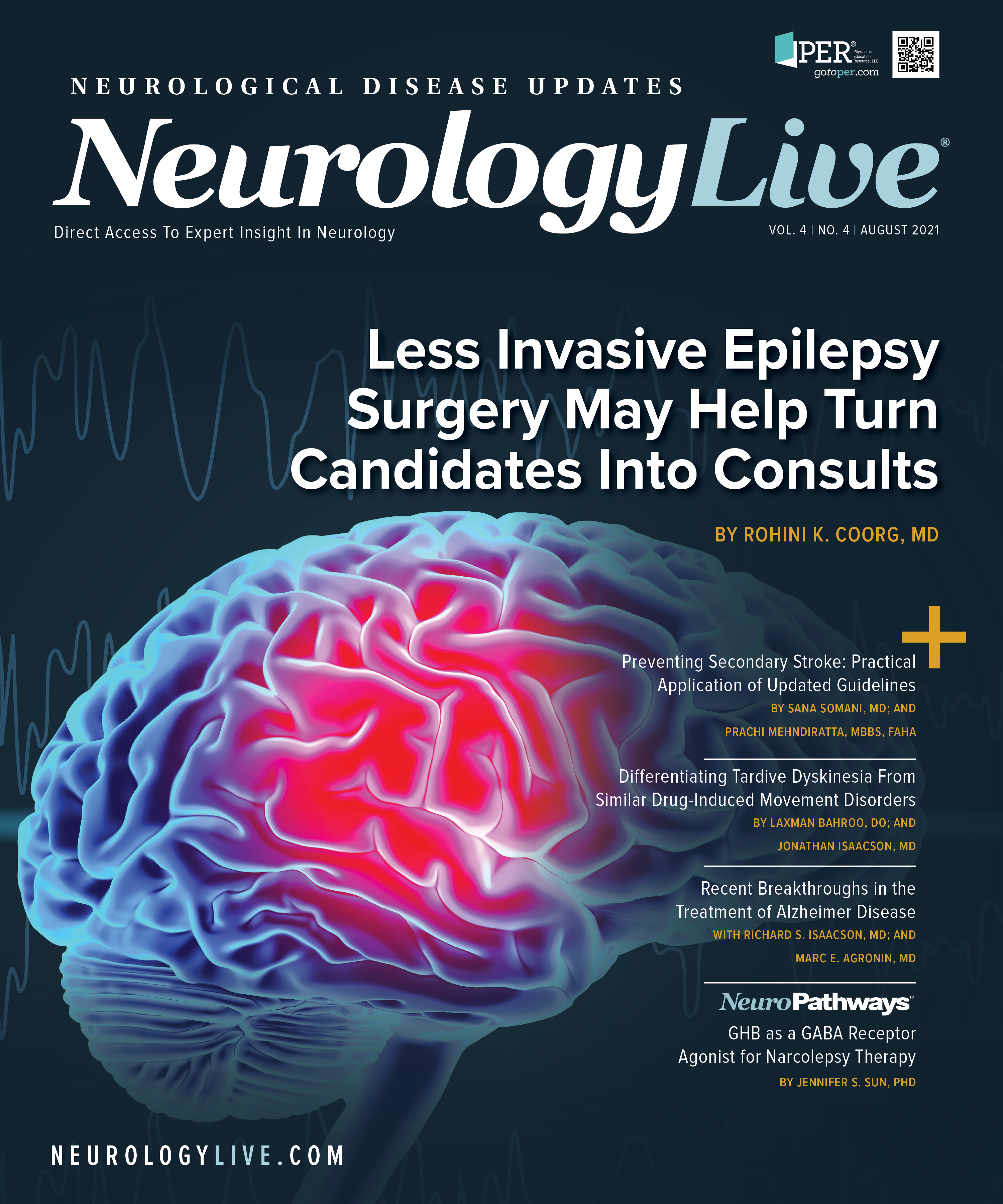Publication
Article
NeurologyLive
It Is Time to Redefine Outcomes in Pediatric Epilepsy Surgery
Author(s):
Successful epilepsy surgery in adults has been followed by forced normalization, depression, and memory issues, resulting in questions about the use of the metrics in the study of broader outcomes—a problem even more prominent in pediatric epilepsy surgery.
Jurriaan Peters, MD, PhD

EPILEPSY SURGERY, LIKE ALL MAJOR clinical interventions, took a foothold in adults before its application in pediatrics. Highly functioning adults undergo a standard anterior temporal lobectomy in the context of a clearly defined goal of seizure freedom. The success rate of temporal lobe resections is approximately 60% to 80%.1
The current Engel Outcome Scale, in particular for retrospective studies, captures the epilepsy aspects of surgical outcomes well.2 But then came other byproducts of successful epilepsy surgery in adults: forced normalization, depression, and memory issues.
Thus, the outcome metrics are not suited for the study of broader outcomes—and this problem is more prominent in pediatric epilepsy surgery.
Neuropsychological evaluations can be considered the “gold standard” of qualification and, with standardized tests, quantification of how a person is functioning in life. Freedom from seizures is meaningless if one cannot partake in essential aspects of life in an increasingly interconnected society. Socioeconomic success, freedom from mental health, and long-lasting relationships are not captured by a seizure outcome scale. Even additional metrics like memory function, and verbal and nonverbal IQ are insufficient when not placed in a bigger societal context. According to Martin Buber, interactioning with others is what defines the human experience.3
For research purposes, however, in the investigation of optimal timing, presurgical work-up, surgical technique, and other factors that drive surgical success, key neurodevelopmental aspects will need to be quantified. Bradley Schlaggar, MD, PhD, president and CEO, Kennedy Krieger Institute, posed during the 2016 Annual Flux Congress that in the study of interventions aimed at improving neurodevelopmental outcomes, investigators should not only rely on established clinical neuropsychological measures, but also to engage cognitive neuroscientists in the trial design. Poorly chosen outcome measures can blow a hole in a clinical trial.
Indeed, several barriers exist that prevent the use of standard neuropsychological test batteries in longitudinal assessment of overall neurological outcome in epilepsy surgery.4 First, there is an abundance of confounders and covariates, including but not limited to parental intelligence, socioeconomic status, and complex psychoactive and antiepileptic drug regimens. There can be comorbid neurodevelopmental conditions, such as autism spectrum disorder, that limit cooperation and underestimate abilities. Second, the majority of tests are neither designed nor validated for serial use—in younger children test scores may allow for reliance on caregiver report, with possible overestimation of abilities. The wide age range, the steep developmental trajectories, and the variation in the neurological phenotype prevent the use of a single battery of tests across all patients. The domain-specific subscores are converted to composite scores, which can be negatively affected by 1 disproportionally poorly scored item, eg, a postsurgical motor deficit. Use of age-equivalent scores for each subtest can only partially address this issue.4
In children, the strengths and weaknesses in the neurodevelopmental profile determine educational achievement, and are highly predictive of later socioeconomic functioning in life. Performed during steep and thus critical phases of neurodevelopment, early epilepsy surgery yields a larger developmental bang for one’s buck.5,6 Moreover, even an incomplete surgical success such as an Engel Epilepsy Surgery Outcome Scale Class III score (“worthwhile improvement”) may still yield developmental benefits. In multilesional epilepsy, similar to tuberous sclerosis complex (TSC), when the most critical and threatening seizure type is targeted successfully with surgery, the patient still can have other, milder seizure types.4 The current outcome scales would consider this a failure, but do not consider the improvement in quality of life for the patient and family. Finally, even when relapse of seizures looms after surgery, a period of seizure freedom can result in marked and sustained developmental gains.7 With stereoencephalography and magnetic reso-nance thermography–guided laser interstitial thermal therapy, for some children repeated smaller surgeries could be more beneficial than a “one-and-done” large open resection while setting unrealistic expectations of permanent seizure freedom.8
On a pathophysiological level, the detrimental effects of recurrent seizures on the developing brain are evident on serial encephalography (EEG). Because of use-dependent plasticity, a primary mechanism of learning in the human brain, seizures evolve from focal to regional and ultimately to rapidly spreading global seizures. Interictal focal spikes may similarly develop into a pattern of a widespread epileptic encephalopathy. In TSC, serial EEGs demonstrated such focal spikes precede seizure onset, and over time increased network connectivity precedes generalized seizures.9,10 At that time, seizures like epileptic spasms and tonic seizures may no longer localize, and thus surgical interventions may be limited in scope.
In summary, although the developmental benefits follow the surgical reduction of the seizure burden, the current outcome metrics do not capture the broader goals of epilepsy surgery. Such goals include optimizing neurodevelopment, preventing the epileptic encephalopathy, and improving the quality of life for our patients and families.
REFERENCES
1. Englot DJ, Lee AT, Tsai C, et al. Seizure types and frequency in patients who “fail” temporal lobectomy for intractable epilepsy. Neurosurgery. 2013;73(5):838-844. doi:10.1227/NEU.0000000000000120
2. Engel J, van Ness PC, Rasmussen TB, Ojemann LM. Outcome with respect to epileptic seizures. Surgical treatment of the epilepsies. In: Engel JJ, ed. Surgical Treatment of the Epilepsies, 2nd ed. Raven Press;1993:609-621
3. Buber M. I and Thou. London: T & T Clark;1937.
4. Grayson LE, Peters JM, McPherson T, Weiner HL, Bebin ME; TACERN Study Group. Pilot study of neurodevelopmental impact of early epilepsy surgery in tuberous sclerosis complex. Pediatr Neurol. 2020;109:39-46. doi:10.1016/j.pediatrneurol.2020.04.002
5. Loddenkemper T, Holland KD, Stanford LD, Kotagal P, Bingaman W, Wyllie E. Developmental outcome after epilepsy surgery in infancy. Pediatrics. 2007;119(5):930-935. doi:10.1542/peds.2006-2530
6. Braun KPJ, Cross JH. Pediatric epilepsy surgery: the earlier the better. Expert Rev Neurother. 2018;18(4):261-263. doi: 10.1080/14737175.2018.1455503
7. Peters JM, Sahin M. Tuberous sclerosis complex. In: Cataltepe O, Jallo GI, eds. Pediatric Epilepsy Surgery: Preoperative Assessment and Surgical Treatment. Thieme Medical Publisher;2020:424-431
8. Coorg R, Peters JM. StereoEEG in tuberous sclerosis complex. In: Schuele S, ed. A Practical Approach to Stereo EEG, 1st ed. Demos Medical Publishing; 2020:1-21.
9. Wu JY, Goyal M, Peters JM, et al. Scalp EEG spikes predict impending epilepsy in TSC infants: a longitudinal observational study. Epilepsia. 2019;60(12):2428-2436. Published correction appears in Epilepsia. 2020;61(4):840. doi: 10.1111/epi.16379
10. Davis PE, Kapur K, Filip-Dhima R, et al. Increased electroencephalography connectivity precedes epileptic spasm onset in infants with tuberous sclerosis complex. Epilepsia. 2019;60(8):1721-1732. doi:10.1111/epi.16284





